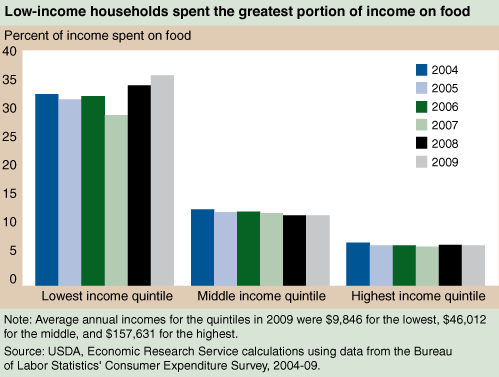Last updated on September 11, 2011
From the US Department of Agriculture’s Economic Research Service:
In 2006, households in the lowest income quintile spent 32.0 percent of their income on food. The 2007-09 recession led to increases in this already high share. Food spending as a share of income for households in the lowest income quintile grew to 35.6 percent in 2009—putting further pressure on thin budgets. Over the same period, food spending as a share of income declined for middle-income households from 12.5 to 11.9 percent and remained flat for the highest income quintile at 6.8 percent.
More here.
A colleague once submitted a paper for publication in which he did a considerable amount of empirical work to show that the quantity demanded of a good he was studying decreased as the price of the same good increased. The referee reports came back, and one of the referees sarcastically noted: “I guess it is always reassuring to discover that demand curves are still downward sloping…”
I guess it is reassuring to note that the cross-sectional version of Engel’s Law — the amount of income spent on food increases as income rises, but the proportion of income spent on food falls as income rises — still holds in the US?
